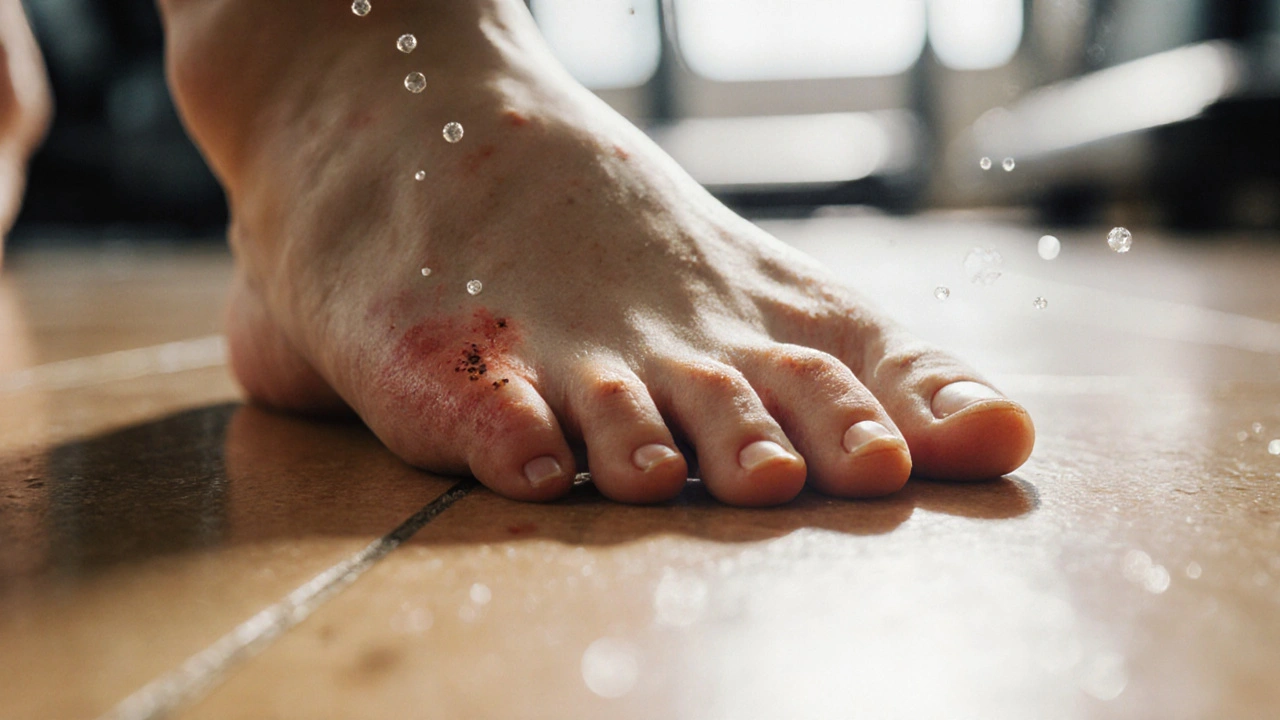Athlete’s Foot – What You Need to Know
If you’ve ever felt an itchy, burning feeling between your toes or seen a flaky rash on the bottom of your foot, you’ve probably dealt with athlete’s foot. It’s a common fungal infection that loves warm, damp places – think sweaty shoes, locker rooms, or a damp shower floor. The good news? It’s easy to treat and even easier to stop it from coming back.
Common Signs and How It Starts
Most people notice a red, scaly patch that may crack or peel. It often starts between the fourth and fifth toes, then spreads outward. You might feel itching, a tingling sensation, or a mild burning pain. In severe cases, the skin can blister or develop a sour smell.
The fungus that causes athlete’s foot, called Trichophyton, thrives in moist environments. Wearing tight shoes, not drying your feet properly after a shower, or sharing socks and footwear can all give the bug a foothold. Even a quick dip in a public pool can do it if you’re not careful.
Fast Ways to Treat and Keep It Away
The fastest way to clear it up is with an over‑the‑counter antifungal cream, spray, or powder. Look for ingredients like clotrimazole, terbinafine, or miconazole. Apply it twice a day for at least two weeks, even if the rash looks better after a few days – that helps kill any hidden fungus.
If the infection is stubborn or spreads to the toenails, a prescription oral medication might be needed. Talk to a pharmacist or doctor before you start any pills, especially if you have liver issues or take other medicines.
Home hacks can speed up healing, too. Soak your feet in a solution of one part white vinegar to four parts water for 15 minutes daily – the acidity makes the fungus harder to survive. After soaking, dry your feet thoroughly, especially between the toes.
Prevention is the real winner. Keep your feet clean and dry, change socks at least once a day, and let your shoes air out after wearing them. If you sweat a lot, use an antifungal powder inside your shoes. Choose breathable shoes made of canvas or mesh rather than plastic.
When you’re at the gym or using a public shower, wear flip‑flops or shower shoes. After a workout, wash your feet with soap, dry them well, and put on fresh socks before slipping on shoes.
If you notice any signs of infection spreading to the skin around your toes, developing pus, or if you have diabetes, see a healthcare professional right away. They can prescribe stronger treatments and check for complications.
Bottom line: athlete’s foot is annoying but not a crisis. Spot it early, treat it with a simple antifungal, keep your feet dry, and you’ll be back to sandal‑ready in no time.

Athlete's Foot: Causes, Symptoms & Effective Treatments
Learn what causes athlete's foot, how to spot symptoms, and the best treatment options-from OTC creams to prescription meds and prevention tips.
view more